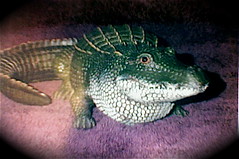
Escape from fiscal matters of economic collapse, both public and private, is not easy these days, but was unexpectedly provided by a gift I received, of a book called "Black Mountain Days," a memoir of the college written by former student, Michael Rumaker. I intended nothing more than a brief peek, a simple scanning to pick up the drift, but once having started reading, I couldn't stop. And so, my favorite kind of book: the kind you can't put down.
Black Mountain College was an experimental, avant-garde school (considered in its day to be a "hotbed of commies and homosexuals" and generalized misfits) in the mountains of North Carolina outside Asheville, that attracted many innovative thinkers, artists, poets, and musicians--among them, Merce Cunningham, Buckminster Fuller, composers Stefan Volpe and Lou Harrison, painters Willem de Kooning and Robert Motherwell, and writers Charles Olson and Robert Creeley. The two summer months I spent there in 1951 when I was only sixteen, sent by my parents as a graduation present after finishing high school, because they were unwilling to send me away to college. was my consolation prize. Amazingly, my parents had no idea what kind of place they were sending me to, nor for that matter, did I, but my being there, almost accidental as it was, in that unorthodox environment, turned out to be a turning point in my life. My maverick, nonconformist self, not easily accommodated at home, in that setting had the time and provocation to emerge.
As it turns out, Black Mountain College was an escape hatch for many people, including Rumaker, who arrived the year after I did, in 1952, as a full-time student wanting to study writing with Charles Olson. I had gone hoping to study painting with, during the first month, Ben Shahn, and during the second, Robert Motherwell, but in the end, I never made a single painting while there. Totally captivated by the looming, bigger-than-life presence of Charles Olson, I began writing poems for the first time, secretly inserting them into his mail box. The response was warm and welcoming: he invited me to join his class.
Michael's early encounters with Olson were much more tortured, as he describes squirming in his seat, spirits drooping under the extreme tongue-lashings he received. I "felt myself shrinking, felt I could barely breathe," he writes--because the man he wanted to please more than any other said to him, right in front of the entire class, "I can't help you because I don't love you." Rumaker's three-year apprenticeship with Olson was as much a quest to find his own voice in writing as it was a struggle to win approval from the man who would become his spiritual father. Cruel as they were, Olson's thunderous rages and verbal slaps became a baptism of sorts that eventually woke him up. Eventually Rumaker was able to produce a short story that won the longed-for respect and affection of his mentor, and he became an "insider," one of Olson's "favorites."
"And Charles telling me during another of the writing classes 'to follow your nose in writing, like pushing a peanut in front of you,' that that was the right way for me to do it." Michael definitely learned to push his peanut, becoming, if this memoir is any example, a superb writer in the process.
Curiously, there was a long affair Michael had during his first year at Black Mountain, with a music student called Merrill Gillespie, the very same individual I had, myself, developed a crush on for several weeks before I left the previous year. Needless to say, in my own case, it never came to anything, but Merrill did give me a hand-written score for a poem of Walt Whitman's, "Calamus," that he had set to music.
In 1955 Michael finally left Black Mountain for good, but not before an attempt was made to commit suicide by slashing his wrists, which fortunately did not succeed. And just after his graduation ceremony, he burned 3 stacks of accumulated old manuscripts in an old trash can: "emblems of my long and green apprenticeship." It was a ritualistic burning that also served as a cleansing. Not long after that, the college, having fallen into extreme poverty for several years and barely hanging on at that point, finally closed its doors for good. The picture above is of me in one of Olson's classes.

3 comments:
Oh, Suzi,
What a wonderful blog! I often ask myself, "how did I get here?" as I am standing in my beautiful massage studio. Your picture is worth it all, darling! What a beauty and what a time it was.
Love,
Hakuin
Suzi...it's a lifetime away, but I still have a photo of you crouching on the terrace next to our black cat quichotte..taken through our Orleans kitchen window . You were only 6 years older than in your Black Mountain photo. As to Black Mountain..there's a web site that comes up under Robert Sunley (my analystwho died last year set up the site to reconnect with Black Mountain students from the beginning years)... I've thought of you often..read each of your books..wanting to touch base with you again. Estelle Z (this is my first time ever on a blog site..I don't even know if that's what it's called..so I hope you get this note and write back. My email address is restez04@aol.com
Hello Suzy, I am currently designing Costumes for a new play entitled "Paint." You, or rather an imagined version of Suzi Gablik appears and introduces the characters of Jasper and Robert.
I was wondering if you could give me any ideas as to what your clothes were when that actually happened. Any info would be great.
Thank you very much,
Richelle
rdmurray@gmail.com
Post a Comment